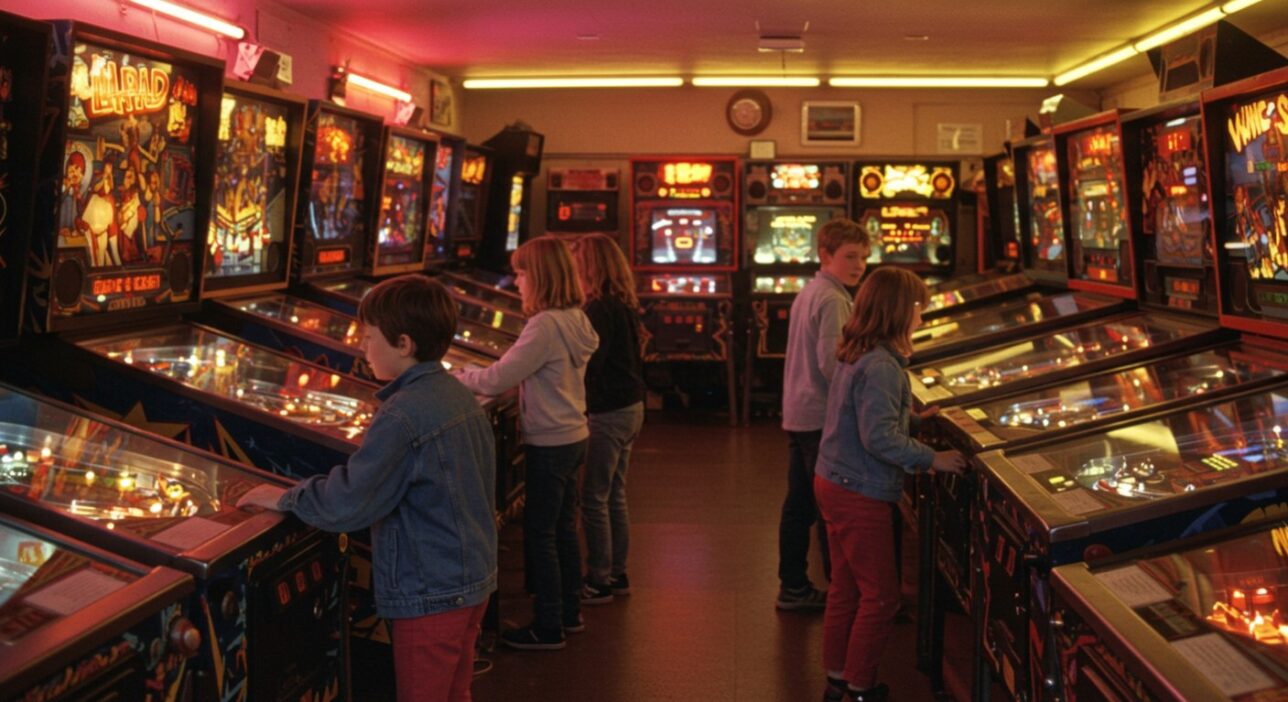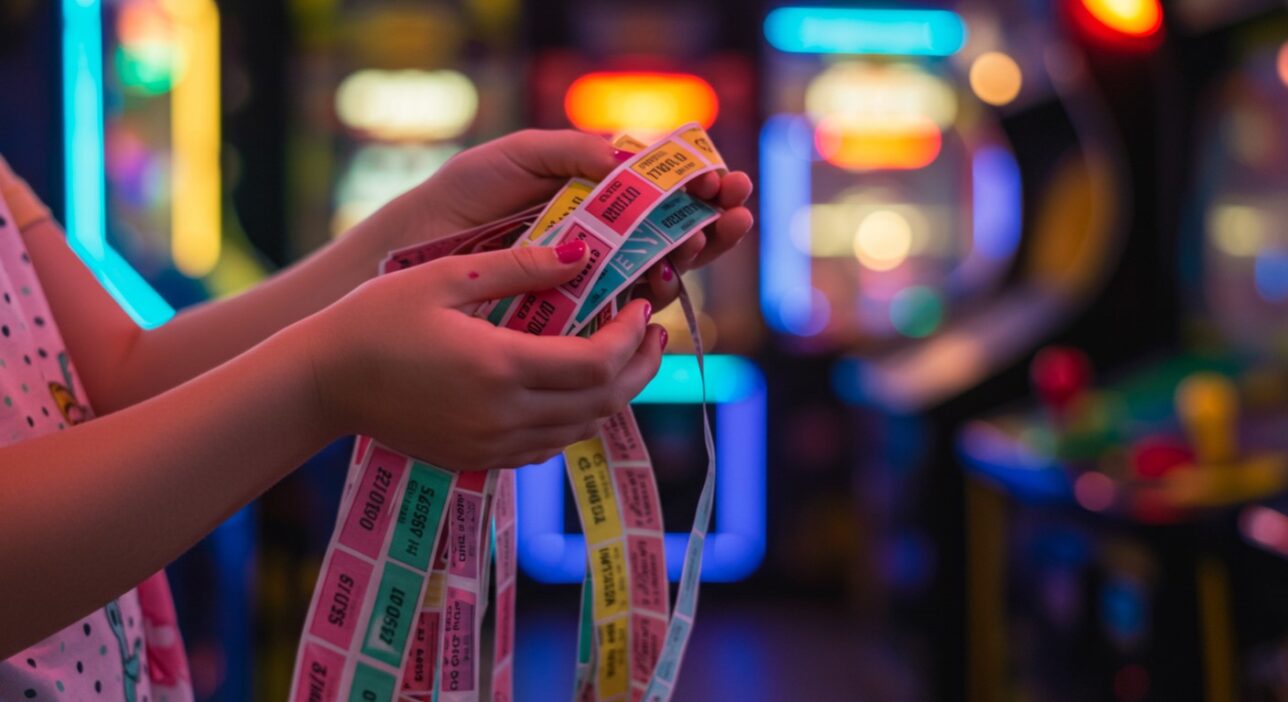
How Do Arcade Redemption Games Work?
Walk into almost any modern arcade in the UK and you’ll notice one thing straight away: children gathered around bright machines that spit out paper tickets or beep as points rack up on a digital counter. These are redemption games, the backbone of today’s family-friendly arcades. They take simple gameplay — dropping coins, shooting hoops, spinning wheels — and add a layer of excitement by offering something tangible at the end: tickets that can be exchanged for prizes.
For kids, the sight of tickets spilling out of a machine is thrilling. For parents, these games are familiar, having replaced or evolved from the 2p pushers and claw machines they grew up with. Redemption games thrive because they combine entertainment with reward, skill with chance, and fun with a sense of achievement.
This article explores what arcade redemption games are, how they work both mechanically and psychologically, why they are so popular with families, and what parents need to know to make the most of the experience.
What Are Redemption Games?

In simple terms, redemption games are arcade machines that award tickets or digital points based on how well you play. Those tickets can then be exchanged at a prize counter for toys, sweets, or gadgets.
This sets them apart from pure amusement machines like pinball or racing simulators, which offer fun but no reward, and from gambling machines, which pay out money rather than prizes. Redemption games sit in a middle space: they are designed for families, accessible to children, and focus on fun rather than financial stakes.
Common examples include:
-
Coin-pushers – dropping coins onto a moving shelf in the hope they push others off the edge.
-
Claw machines – manoeuvring a claw to try and grab a toy.
-
Basketball hoops – shooting as many baskets as possible in a time limit.
-
Spinning wheels – hitting a button to stop a wheel on a jackpot slot.
-
Whack-a-mole games – bashing targets as they pop up to earn points.
What all of these share is the same core loop: play, score, receive tickets, and trade them in for prizes.
The Mechanics of Redemption Games
Behind the flashing lights and cheerful music, redemption games are carefully designed machines with mechanisms that balance fun, fairness, and sustainability for arcade operators.
Ticket Payouts
Most redemption games are programmed to pay out a set range of tickets depending on performance. For example, score 20 baskets in a minute and you might win 30 tickets, but score 50 and you might win 200. This creates an incentive to improve your skill while ensuring rewards feel proportionate.
Skill vs Chance
Different redemption games lean on different balances. Basketball hoops and whack-a-mole are mostly skill-based: the better you are, the more tickets you’ll earn. Coin-pushers and spinning wheels rely heavily on chance, though timing can influence outcomes. Claw machines sit somewhere in between, with a mix of skill (positioning the claw) and programmed grip strength.
Operator Calibration
Arcade operators can calibrate machines to adjust difficulty and payout rates. A claw machine might only deliver a “strong grip” one in every 10 tries, ensuring that prizes aren’t won too easily. Pushers can be set to allow small, frequent wins but make jackpots rarer. These adjustments keep games fun while protecting the arcade’s business model.
Paper vs Digital Tickets
Traditionally, machines would dispense long streams of paper tickets. Many arcades now use electronic systems where tickets are stored on swipe cards. This reduces waste, prevents lost tickets, and makes it easier for players to save up over time. Both systems, however, create the same sense of progress and reward.
Types of Redemption Games

Redemption games come in many forms, each appealing to different ages and playing styles.
Skill-Based Games
-
Basketball hoops – a classic family favourite, encouraging children and parents to compete side by side.
-
Whack-a-mole – tests reflexes and coordination, great for younger kids.
-
Air hockey with ticket payouts – combines competitive fun with a reward.
Chance-Based Games
-
Spinning wheels – often designed with bright lights and loud sound effects to heighten anticipation.
-
Coin-pushers – timeless seaside staples, often combined with small prizes balanced on the edge.
-
Claw machines – iconic in both seaside and city arcades, offering plush toys as instant wins.
Hybrid Games
Some games blend skill and luck. For instance, a ball-dropping game where you aim for specific slots might reward precision, but the ball’s bounce introduces chance. These hybrids are particularly engaging because players feel they have control while still experiencing unpredictability.
Across the UK, the most popular redemption machines remain coin-pushers, claw machines, and basketball hoops — staples of both seaside arcades and family entertainment centres.
Why They’re So Popular with Kids and Families
The popularity of redemption games lies in their ability to engage players of all ages simultaneously.
-
Immediate Gratification: Winning tickets after even a short round keeps children excited and motivated.
-
Saving for Bigger Rewards: Kids love the idea of building up tickets across multiple games to trade for a larger prize.
-
Sensory Appeal: Flashing lights, upbeat sounds, and physical feedback (like tickets spilling out) create excitement.
-
Family Bonding: Parents often join in, whether competing against children or helping them win tickets together.
The mix of quick gameplay, visible rewards, and social fun makes redemption games especially appealing to families looking for activities where everyone can participate.
The Psychology Behind Redemption Games

At their heart, redemption games work because they tap into basic psychological principles of motivation and reward.
Reward Loops
Every time a child wins tickets, their brain receives a small dopamine hit. This creates a “reward loop” that encourages them to keep playing. Even small wins feel significant and fuel the desire for “just one more go.”
Similarities with Gambling
Redemption games share some mechanics with slot machines, such as flashing lights and variable rewards. The difference is that redemption games are designed for families and reward prizes rather than money, making them safe entertainment rather than gambling.
Why Kids Love Them
Children are particularly responsive to visible progress. Tickets piling up in their hands or numbers climbing on a screen provide tangible proof of achievement. Exchanging them at the prize counter reinforces the experience, turning play into something material.
For parents, understanding this psychology is helpful. It explains why children can become absorbed — and why setting limits is important.
Prizes and Redemption Counters
The final stage of the redemption game loop is the prize counter, often one of the most exciting areas of the arcade for children.
Prizes range from small sweets and plastic toys to larger items like cuddly toys, headphones, or gadgets. The key is choice: children can decide whether to spend their tickets straight away on small prizes or save over multiple visits for something more valuable.
This system is clever because it extends engagement beyond the game itself. Even after play has finished, children remain invested in the outcome, carefully browsing prize shelves and making decisions.
For families, the prize counter can be as much fun as the games. Parents watch children weigh their options, and often encourage saving tickets for something special, teaching patience and goal-setting in the process.
Costs, Value, and Parental Tips

One common question parents ask is whether redemption games are “worth it.” After all, the cost of playing often outweighs the value of the prize. A £10 spend may result in a toy worth only a couple of pounds.
But the real value lies in the experience. The fun of playing, the excitement of winning, and the joy of choosing a prize all combine into something greater than the sum of its parts.
Tips for Parents:
-
Set a Budget: Load a set amount onto a card or bring a fixed amount of coins. When it’s gone, the session is over.
-
Encourage Saving: Teach kids to save tickets over multiple visits for larger prizes.
-
Focus on Fun: Frame the experience as entertainment rather than a way to “beat the system.”
-
Balance Games: Mix redemption games with pure amusement games so children get variety.
By managing expectations and costs, families can maximise enjoyment while avoiding overspending.
The Evolution of Redemption Games
Redemption games have evolved significantly over the years.
-
From Paper to Digital: Many arcades now use swipe cards that record tickets electronically, eliminating paper waste and lost tickets.
-
Integration with Entertainment Centres: Arcades are now part of larger venues with bowling, cinemas, and restaurants, making redemption games more accessible to families.
-
New Trends: Some modern redemption machines incorporate VR or interactive screens, blending traditional reward systems with immersive technology. These innovations ensure redemption games remain fresh and appealing to new generations.
The shift from standalone machines to integrated entertainment experiences reflects the changing role of arcades in family leisure.
Arcade Redemption Games: The Fun Behind the Tickets

Redemption games work because they combine the joy of play with the thrill of reward. They are simple, engaging, and accessible to children and families alike. Whether it’s the excitement of a claw machine grabbing a toy, the satisfaction of hitting baskets, or the anticipation of watching tickets spill out of a pusher, these games create lasting memories.
For parents, the key is balance: recognising that redemption games are about fun and family bonding rather than the financial value of the prizes. With sensible budgeting and active involvement, they can turn an ordinary arcade visit into a highlight of a family day out.
In a world dominated by digital gaming, redemption games keep the arcade experience alive. They remind us that sometimes the simplest pleasures — lights, sounds, tickets, and prizes — are the ones that appeal to all ages.





